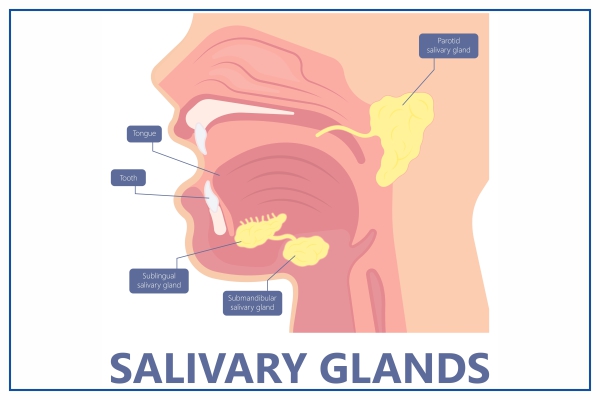Salivary Duct Stones
A salivary gland stone is a calcified structure that forms inside a salivary gland or duct. It can block the flow of saliva into the mouth. The stone is often referred to as salivary duct calculus and mainly occurs in middle-aged adults. It is the common cause of blockage in the salivary ducts. Consult a gastroenterologist to get a second opinion.
Symptoms
Symptoms of salivary duct stones include getting pain in the face, mouth, or neck that becomes worse just before or during meals. The salivary glands produce saliva to facilitate eating. When saliva cannot flow through a duct, it backs up in the gland and can cause swelling and pain.
It may include tenderness and swelling in the face, mouth, or neck. It may also lead to a dry mouth and trouble swallowing or opening the mouth. Bacterial infections also occur when a gland is filled with stagnant saliva. Signs of an infection include fever, a foul taste in the mouth, and redness over the affected area.

Causes
Certain substances in the saliva, such as calcium phosphate and calcium carbonate, can crystallize and form stones. They can range in size from a few millimeters to more than two centimeters. When these stones block the salivary ducts, saliva builds up in the glands, making them swell. The reason why stones form in the first place is not known. A few factors are associated with a higher risk of having stones. These include:
Common symptoms of a minor head injury include:
- Taking medications, such as blood pressure drugs and antihistamines, can reduce the amount of saliva produced by the glands
- Being dehydrated, as makes the saliva more concentrated
- Not eating enough food, which causes a decrease in saliva production
Where Do Salivary Duct Stones Occur?
There are three pairs of major salivary glands in the mouth. Salivary duct stones most often occur in the ducts which are connected to the submandibular glands. These are the glands located on both sides of the jaw in the back of the mouth. Stones can also form in the ducts that are connected to the parotid glands, which are located on each side of the face in front of the ears. You can have one or more stones in the duct. About 25 percent of people with this condition usually develop more than one stone.
Diagnosis
The dentist will examine the head and neck to check for swollen salivary glands and salivary duct stones. Imaging tests can provide a more accurate diagnosis because the doctor will be able to see the stones. An X-ray, ultrasound, or a Computed Tomography(CT) scan of the face are some of the imaging tests that may be ordered.
Treatments
If you’ve suffered a serious brain injury, you’ll most likely need rehabilitation to regain full brain function. The type of rehabilitation you get will depend on what functionality you have lost as a result of your injury. People who have suffered a brain injury will often need help regaining mobility and speech.
Home treatments
Treatment for salivary duct stones involves activities to get rid of the stones. Dentists may suggest sucking on sugar-free lemon drops and drinking a lot of water.
Medical Treatments
If you can’t get the stone out at home, the dentist can try to push it out by pressing it on both sides of the duct. Stones that are large or located deep within the duct may need to be surgically removed. In some of the cases, doctors may suggest using shock waves to break the stone into smaller pieces. This is called Extracorporeal Shock Wave Lithotripsy (ESWL) and allows the smaller pieces to pass through the duct. During this procedure, high-energy sound waves are directed at the stone. You will likely be sedated or under general anesthesia during this process. ESWL is also commonly used to break the other types of stones in the body, such as those which are present in the kidney or bladder.

